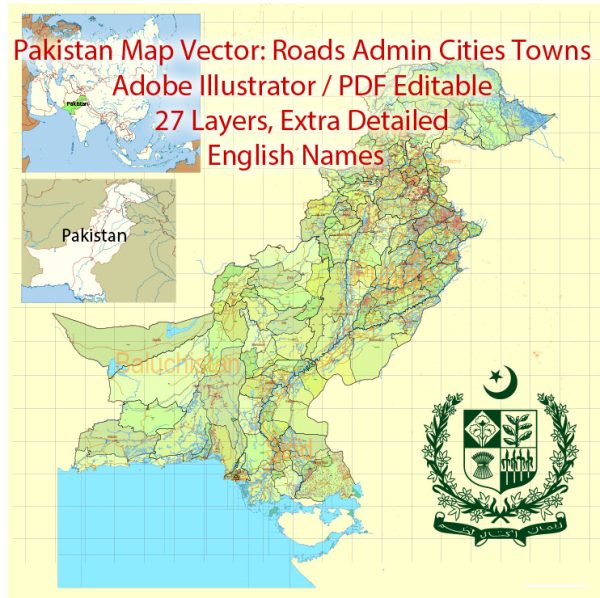The history of urban development in Pakistan is a complex and multifaceted story that spans thousands of years. The region that is now Pakistan has a rich cultural and historical heritage, and its urban centers have played a significant role in shaping the course of South Asian civilization. Here is a brief overview of the key periods and factors that have influenced urban development in Pakistan:
- Ancient Civilizations:
- The region of present-day Pakistan has been home to several ancient civilizations, including the Indus Valley Civilization (around 3300–1300 BCE). Mohenjo-Daro and Harappa, two major cities of this ancient civilization, were characterized by advanced urban planning with well-laid-out streets, drainage systems, and complex architecture.
- Islamic Period:
- With the advent of Islam in the 7th century, the region became a center for Islamic culture and learning. Cities like Lahore, Multan, and Sialkot became important centers of trade, culture, and administration under various Islamic dynasties.
- Mughal Empire:
- The Mughal period (1526–1857) marked another significant phase in urban development. Lahore, in particular, became a major center of Mughal architecture, with structures like the Badshahi Mosque and the Lahore Fort still standing as testament to the empire’s architectural prowess.
- British Colonial Era:
- The British colonial period (1858–1947) had a profound impact on urban development. Cities like Karachi, Lahore, and Rawalpindi underwent changes in infrastructure, with the introduction of railways, roads, and modern administrative structures. The British influence is still visible in the architecture of many government buildings and railway stations.
- Post-Independence Period:
- After gaining independence in 1947, Pakistan saw significant population migrations, with the creation of a separate state for Muslims. Karachi, the capital at the time, became a major economic and cultural hub. Rapid urbanization and industrialization ensued, with the development of new cities and the expansion of existing ones.
- Urbanization Challenges:
- The latter half of the 20th century and the beginning of the 21st century brought challenges associated with rapid urbanization, such as infrastructure strain, housing issues, and environmental concerns. Cities like Karachi, Lahore, and Islamabad have continued to grow, leading to the need for sustainable urban planning.
- Contemporary Urban Development:
- In recent years, there has been an increased focus on sustainable urban development, with an emphasis on infrastructure improvement, affordable housing, and environmental considerations. Cities are grappling with issues like traffic congestion, waste management, and provision of basic services.
- Cultural and Heritage Preservation:
- Efforts are also being made to preserve and promote the cultural and historical heritage of urban centers. Conservation of historical sites and the promotion of cultural tourism are becoming important aspects of urban planning.
In summary, Pakistan’s history of urban development is marked by a rich tapestry of ancient civilizations, Islamic influences, Mughal grandeur, British colonial impact, and the challenges of post-independence urbanization. The contemporary period sees a focus on sustainable development and the preservation of cultural heritage amid the demands of a growing population and urban landscape.


 Author: Kirill Shrayber, Ph.D.
Author: Kirill Shrayber, Ph.D.